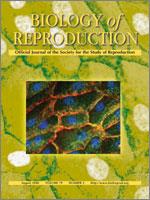Oocyte competence is the ability of the oocyte to complete maturation, undergo successful fertilization, and reach the blastocyst stage. Cumulus cells are indispensable for this process. Their removal significantly affects the blastocyst rates. Moreover, the properties and functions of cumulus cells are regulated by the oocyte. They also reflect the oocyte's degree of maturation. Our study was aimed at identifying markers of oocyte competence that are expressed in bovine cumulus cells. In a previous study in our laboratory, the blastocyst yield following FSH or phorbol myristate acetate (PMA) treatment was 45%%. Therefore, we tested four sets of conditions during the first 6 h of in vitro maturation (IVM): FSH (0.1 μg/ml), PMA (0.1 μM), FSH PMA, and negative control. Extracts from each IVM treatment were hybridized against the same negative control on a microarray containing a partial library of differentially expressed transcripts in the cumulus of competent oocytes collected at 6 h after LH in vivo. Common positive clones between diffentially treated cells were selected, and 15 candidates were validated by real-time PCR. Based on this, the main candidates expressed in cumulus cells and that could be valuable and indirect markers of oocyte competence are hyaluronan synthase 2 (HAS2), inhibin βA (INHBA), epidermal growth factor receptor (EGFR), gremlin 1 (GREM1), betacellulin (BTC), CD44, tumor necrosis factor-induced protein 6 (TNFAIP6), and prostaglandin-endoperoxide synthase 2 (PTGS2). These biomarkers could be potential candidates to predict oocyte competence and to select higher-quality embryos for transfer. Additionally, these indirect predictors of oocyte competence and follicular health could improve our knowledge of gene expression patterns in the cumulus and yield insights into the molecular pathways controlling oocyte competence.
How to translate text using browser tools
1 August 2008
Identification of Potential Markers of Oocyte Competence Expressed in Bovine Cumulus Cells Matured with Follicle-Stimulating Hormone and/or Phorbol Myristate Acetate In Vitro
Mourad Assidi,
Isabelle Dufort,
Atef Ali,
Mélanie Hamel,
Omran Algriany,
Steph Dielemann,
Marc-André Sirard
ACCESS THE FULL ARTICLE

Biology of Reproduction
Vol. 79 • No. 2
August 2008
Vol. 79 • No. 2
August 2008
cumulus cells
follicle-stimulating hormone
microarray
oocyte competence
SSH




